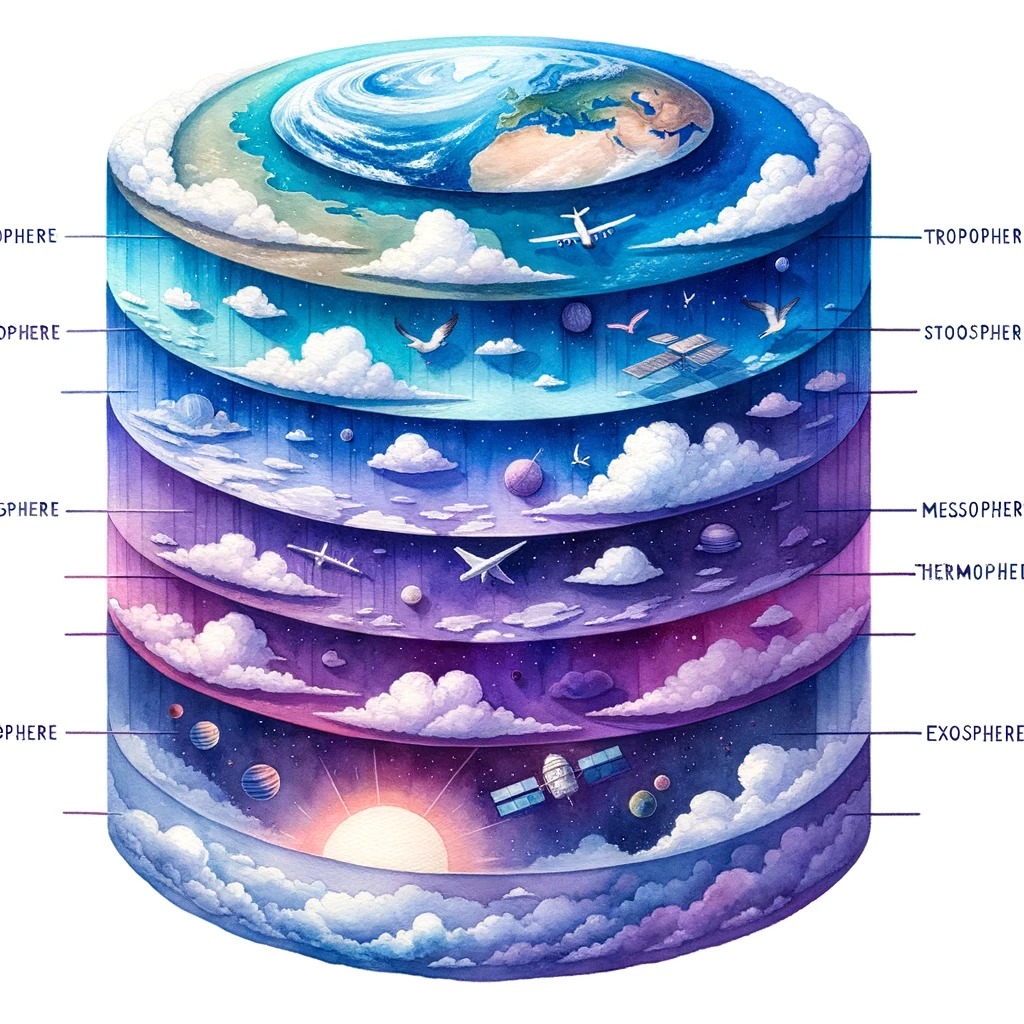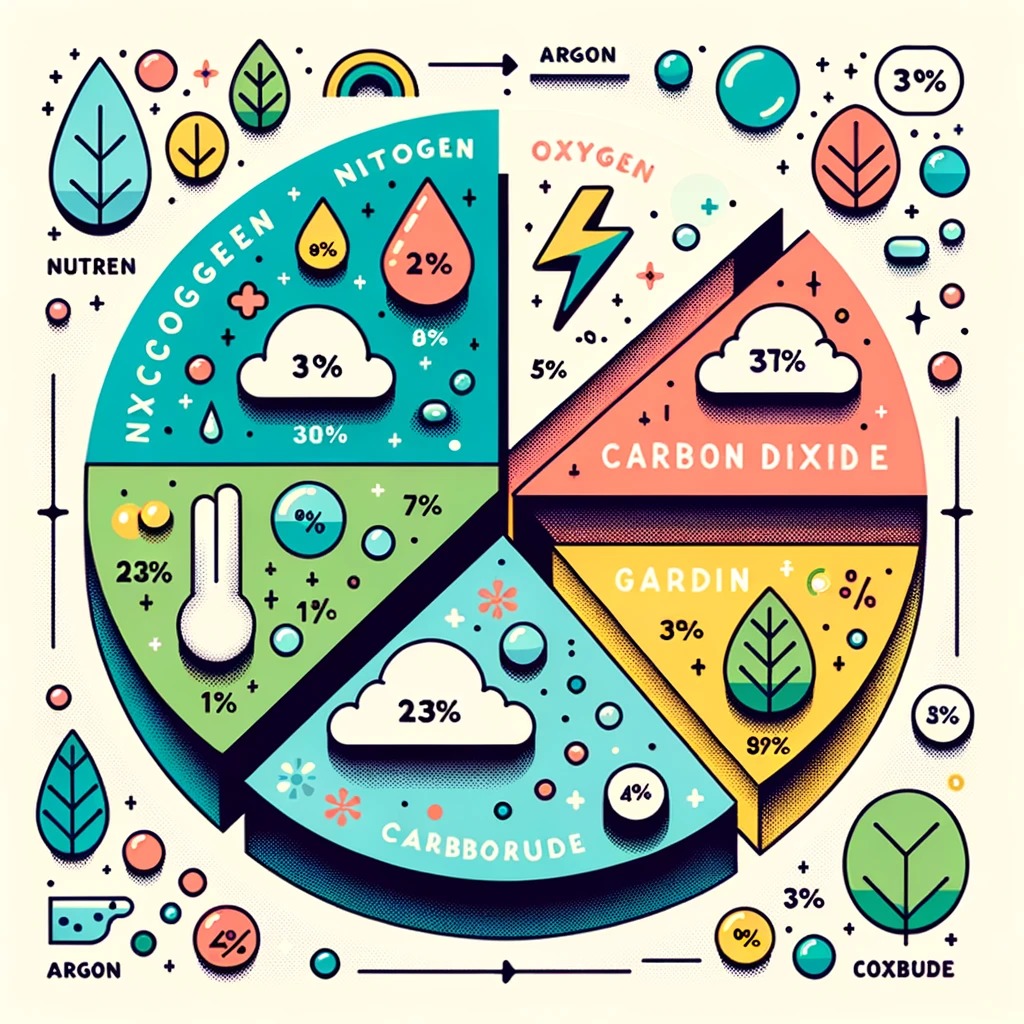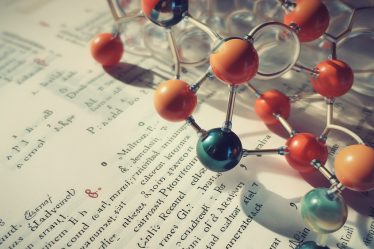
Welcome to this comprehensive guide on understanding what is air, a topic that often goes unnoticed despite its omnipresence and significance. You might think you know what air is—it’s what you breathe, after all. But there’s much more to it than meets the eye. Air is a complex mixture of gases and particles that envelops the Earth, and it plays a pivotal role in sustaining life and influencing weather patterns. Whether you’re a student, a teacher, a tutor, or someone simply interested in understanding the world around you, this article aims to provide you with a thorough understanding of what air is, its composition, and why it’s so crucial for life on Earth.
Want to expand your chemistry horizons? Our World of Chemistry offers a plethora of free educational blogs.
Discover your ideal chemistry tutor at meet’n’learn and skyrocket your understanding to new heights!
Here’s a glimpse of what you’ll learn:
- Composition: Major and trace elements in air.
- Atmosphere Layers: Their unique traits.
- Air Quality: Factors and pollutants.
- Water Cycle: Air’s role in weather.
- Matter & Pressure: States and effects.
- Chemical Reactions: Key atmospheric changes.
Are you interested in other subjects? We’ve got great free study guides for Biology, English, French, and Music.
What is Air and Its Composition: What Exactly is in the Air You Breathe?
Have you ever stopped to think about what you’re breathing in every second of every day? The air around us is a complex mixture of various gases and elements. Understanding the composition of air is not just a topic for scientists and students but is crucial for everyone. This section will break down the major and trace components of the air you breathe. A qualified science tutor can offer invaluable insights if you’re looking for a deeper understanding of air composition.
Major Gases in the Atmosphere: What Makes Up Most of the Air?
Nitrogen (N2) is the heavyweight champion of the atmosphere, making up about 78.084% of the air we breathe. Nitrogen is relatively inert and doesn’t react easily with other elements despite its abundance. It is a diluent for oxygen, ensuring our air is not too reactive.
Oxygen (O2), the life-sustaining gas, constitutes approximately 20.9476% of the air. It’s an essential element for the respiration process in humans and animals and is crucial for combustion processes in various industries.
Argon (Ar) might not be a household name, but it accounts for about 0.934% of the air. It’s a noble gas, which means it’s mostly inert and doesn’t react with other elements. Argon has no significant biological role but is used in various industrial applications. (3)
Trace Elements in the Air: The Unsung Heroes
Carbon Dioxide (CO2) may only make up about 0.04% of the air, but its role is significant. It’s vital for the process of photosynthesis in plants and is a crucial player in the Earth’s climate, acting as a greenhouse gas.
Neon and Other Noble Gases like helium and krypton are present in trace amounts. These gases are generally inert and have limited roles in biological processes. However, they are used in various technological applications, such as neon signs and gas lasers.
Water Vapor is the wildcard in the atmosphere. Its concentration can vary greatly depending on the weather and location but averages around 0.25% by mass. Water vapor is crucial for weather patterns and plays a significant role in the water cycle. (1)
What is Air and Its Composition: A Quick Reference
| Component | Percentage in Air | Role |
|---|---|---|
| Nitrogen | ~78% | Dilutes oxygen and prevents rapid burning at the Earth’s surface. |
| Oxygen | ~21% | Essential for respiration and combustion. |
| Argon | ~0.93% | Not reactive; provides an inert atmosphere. |
| Carbon Dioxide | ~0.04% | Involved in photosynthesis and respiration. |
| Neon | ~0.0018% | Used in neon signs; otherwise inert. |
| Water Vapor | Variable | Involved in weather patterns and water cycle. |
Ethanol and Alcohols in chemistry and how Beer is Made.
Layers of the Atmosphere: A Journey from Earth to Space
When you look at the sky, you see the tip of the atmospheric iceberg. The Earth’s atmosphere is divided into several layers with unique characteristics and functions. In this section, we’ll take you on a journey from the ground up, exploring each layer of the atmosphere. Tutoring sessions can help clarify the complex interactions between different layers of the atmosphere.
Troposphere: Where Weather Happens
The troposphere is the layer closest to Earth’s surface, extending from the ground to about 4 to 12 miles up. This is where all the weather phenomena occur, and it’s the air we breathe. The temperature in this layer decreases as you go higher, making it a dynamic and ever-changing environment.
Stratosphere: The Ozone Layer’s Home
Above the troposphere lies the stratosphere, extending up to about 31 miles above Earth. This layer is home to the ozone layer, which protects us from harmful UV rays. Interestingly, the temperature in the stratosphere increases with altitude, contrary to what happens in the troposphere. (2)
Mesosphere: The Middle of the Atmosphere
The mesosphere starts at about 31 miles and goes up to 53 miles above Earth’s surface. The air here is thin, and temperatures can plummet to as low as -130°F. This layer is challenging to study directly since it’s too high for weather balloons and too low for satellites.
Thermosphere: Where Auroras Occur
The thermosphere is located several hundred miles above Earth, starting at around 56 miles up. This layer experiences extreme temperature fluctuations, affected significantly by solar activity. It’s also where the mesmerizing auroras occur.
Exosphere: The Final Frontier
The exosphere is the outermost layer, extending from the top of the thermosphere up to 6,200 miles above Earth. This layer has very few atmospheric molecules; some even escape into space. Whether the exosphere should be considered a part of the atmosphere or outer space is a subject of debate.
Need help with biology topics? Explore our extensive collection of biology educational blog posts designed to simplify complex concepts for you. Whether it’s photosynthesis, osmosis, the intricacies of green algae, understanding bacteria and viruses, or delving into the fascinating world of genetics and cells, our resources have got you covered. Expand your knowledge and enhance your learning journey with us today.
Air Quality: What’s in the Air and How It Affects You
Ever wondered why some days you can breathe easily, while on others you might experience some discomfort? The air quality you breathe can significantly impact your health and the environment. This section will delve into the factors contributing to air quality, how it’s measured, and why it matters. Specialized chemistry lessons in environmental science are available for those interested in air quality.
Types and Sources of Air Pollution: What’s Lingering in the Air?
The air contains natural components and pollutants that can harm both humans and the environment. Pollutants like nitrogen dioxide, carbon monoxide, and sulfur dioxide are commonly found in vehicle exhaust and industrial emissions. Natural sources like volcanoes and forest fires also contribute to air pollution. More about the chemistry of water pollution.
Air Quality Index (AQI): Your Daily Air Quality Report
The Air Quality Index (AQI) is a standardized system used to measure and compare air quality across different locations and times. AQI values range from 0 to 500, with higher values indicating worse air quality. Various pollutants, such as particulate matter (PM2.5 and PM10), ozone, and nitrogen dioxide, are considered when calculating the AQI.
How AQI is Measured: The Science Behind the Numbers
AQI is calculated using data from air quality monitoring stations, which measure the concentration of various pollutants. These stations use advanced sensors and analytical methods to provide accurate and timely information. Understanding how AQI is calculated can help you make informed decisions about outdoor activities, especially if you have respiratory issues. For hands-on experience in measuring air quality, consider enrolling in practical science classes.
Check out 8 Exciting Science Experiments for Kids and unravel The Greatest Discoveries in Biology.
The Water Cycle and Weather: Air’s Role Unveiled
Ever wondered how clouds form or why it rains? It’s all about the interaction between air and water. Evaporation turns water into vapor, rising into the atmosphere, while condensation transforms it back into liquid, forming clouds. When these water droplets become too heavy, precipitation occurs, falling as rain, snow, or other forms. Weather fronts, the boundaries between air masses, can lead to varying weather conditions like thunderstorms or drizzly rain. These patterns are influenced by factors like air pressure, temperature, and humidity, helping meteorologists make accurate predictions. If you’re preparing for a science exam, a tutor can help you understand the role of air in the water cycle.
States of Matter and Air Pressure: The Invisible Force Around You
Ever wondered why your ears pop on a flight or why the weather changes? It’s all about states of matter and air pressure. Air exists mainly in a gaseous state, with molecules in constant motion. These molecules exert force on surfaces, known as air pressure, which varies with altitude and influences weather patterns. Substances like air can change states; for instance, air can be compressed into liquid under specific conditions. Measuring this pressure using a barometer, is crucial for predicting weather and various scientific applications. A private teacher can provide a more tailored approach to learning about air pressure and its effects on weather.
Introduction to the Periodic Table and Functional Groups in Organic Chemistry.
Chemical Reactions in the Atmosphere: The Invisible Chemistry Above Us
While the atmosphere may seem like just a vast expanse of air, it’s a complex chemical system. Various reactions occur in the atmosphere that significantly affect life on Earth and the planet itself. Let’s explore some of these key reactions. Online tutoring can be a convenient way to delve into the intricacies of chemical reactions in the atmosphere.
Photosynthesis: The Green Chemistry
Photosynthesis is a process where plants convert carbon dioxide and sunlight into oxygen and glucose. This reaction not only sustains plant life but also contributes to the oxygen levels in the atmosphere, making it vital for all aerobic organisms.
Combustion: Fire in the Sky
Combustion is a chemical reaction that involves the rapid combination of a fuel with oxygen. While most think of combustion as happening in engines or fireplaces, it also occurs naturally in events like wildfires, contributing to air pollution.
Acid Rain: The Sour Side of the Atmosphere
When sulfur dioxide and nitrogen oxides are released into the atmosphere, they can react with water vapor to form acid rain. This harms aquatic life and vegetation and can also corrode buildings and infrastructure.
Ozone Formation: A Double-Edged Sword
Ozone is a triatomic allotrope of oxygen that occurs naturally in the stratosphere, where it absorbs harmful UV radiation. However, it can be toxic in the lower atmosphere and is often a byproduct of air pollution. Ozone is a powerful oxidizing agent and can irritate the eyes and mucous membranes.
The basics of Polymers.
Conclusion: The Invisible Yet Indispensable Air
In this comprehensive guide, we’ve explored the multifaceted nature of air, from its composition and layers to its impact on weather and health. Understanding the intricacies of air is not just a scientific endeavor but a necessity for making informed decisions that affect our well-being and the planet. If you’re passionate about environmental chemistry, a specialized tutor can help you understand the air’s role and composition.
Are you looking for a chemistry tutor? Enter “chemistry tutor Glasgow” or “chemistry teacher Sheffield” on your preferred tutoring platform, such as meet’n’learn, to find a teacher who can meet your specific needs.
If you thrive in group learning environments, search “chemistry classes London” or “chemistry lessons Manchester” online to discover local schools offering chemistry lessons.
FAQ: Your Questions on What is Air
1. What is the primary component of air?
The primary component of air is nitrogen, making up about 78% of the Earth’s atmosphere.
2. How does air pressure affect weather?
Air pressure plays a significant role in determining weather patterns. High-pressure systems usually bring clear skies, while low-pressure systems are associated with cloudy weather and precipitation.
3. What is the role of ozone in the atmosphere?
Ozone in the stratosphere absorbs harmful UV radiation from the sun, protecting life on Earth. However, it can be a pollutant and irritant in the lower atmosphere.
4. How is air quality measured?
Air quality is commonly measured using the Air Quality Index (AQI), which considers various pollutants like particulate matter, nitrogen dioxide, and ozone.
5. Why does air pressure change with altitude?
As you ascend in altitude, the density of air molecules decreases, leading to a reduction in air pressure. This is why your ears may pop on an airplane or climbing a mountain.
6. What causes air pollution?
Air pollution can be caused by both natural and human activities. Natural sources include volcanoes and forest fires, while human activities include industrial emissions, vehicle exhaust, and the burning of fossil fuels.
7. Is air considered matter?
Yes, air is considered matter as it has mass and occupies space. It can also be compressed and expanded, exhibiting properties of matter.
8. What is the role of air in photosynthesis?
Air provides the carbon dioxide needed for photosynthesis, a process where plants convert carbon dioxide and sunlight into oxygen and glucose.
Discover the fundamentals of Electrochemistry, Redox Reactions, and Balancing Chemical Equations.
References:
1. TeachEngineering
2. Britannica
3. UCAR



